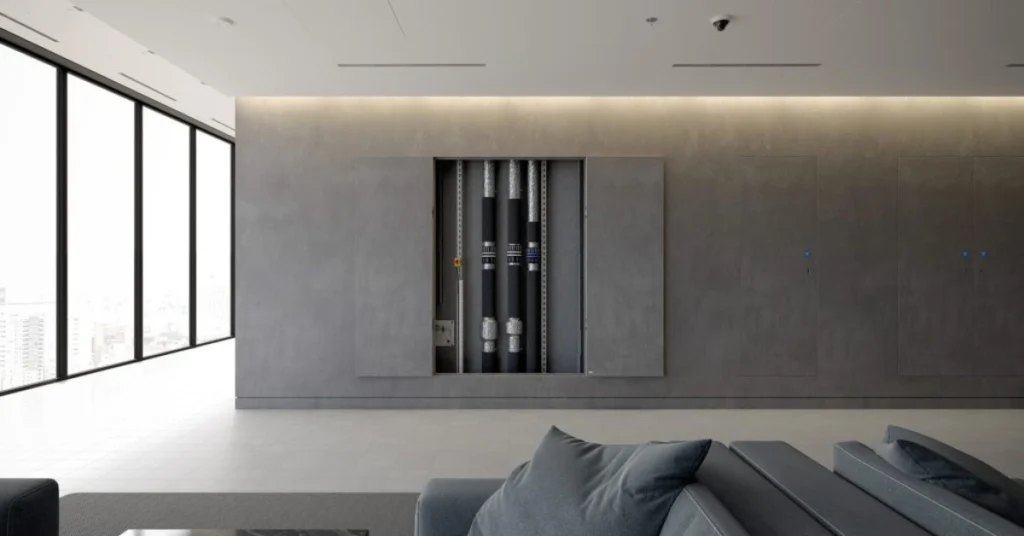Delaying the installation of drywall access doors until the end of a construction project can cause several problems. This last-minute rush often creates messy patches that ruin the appearance of the building. Waiting can also create delays and mess up timelines and budget estimates. This complicates team coordination, turning a simple task into a frustrating bottleneck.
A proactive approach is critical to preventing these issues. Installing drywall access doors earlier in the building process offers many advantages. This method optimizes workflows, reduces the need for costly rework, and leads to smoother, more economical project completion. Adding this step early can reduce last-minute chaos, improving the project’s success.
In this article, we will discuss why installing drywall access doors early is a smart move. We will cover effective methods for implementing this strategy and highlight the benefits that can enhance your project budget.
The High Cost of Waiting to Install Drywall Access Doors
Installing drywall access doors late in the process causes several problems. It leads to:
Rework Issues
Postponing access door installation often results in extensive rework. Cutting into finished drywall is difficult and messy, requiring careful work to avoid damaging nearby areas. This process then calls for patching and painting. These steps can be labor-intensive and complicated, often requiring multiple workers to return to what should be a simple task.
Cost and Schedule Problems
Delaying installation can escalate labor costs as skilled workers spend more time on complicated repairs instead of completing other tasks. More site visits for these adjustments and wasted materials inflate expenses. Such delays can also disrupt the project timeline, push back inspections, and require other trades to wait, leading to further penalties.
Coordination Challenges
Integrating new access doors often requires adjustments to existing HVAC, plumbing, and electrical systems. When these installations are delayed, coordination problems can arise. This leads to scheduling conflicts and increased project complexity.
Consequently, finished areas risk damage, lowering overall work quality. Such issues often necessitate expensive future repairs.
Benefits of Early Drywall Access Door Installation
Early drywall access door installation offers significant advantages for contractors and builders. By incorporating these features early in a project, teams can increase productivity, cut expenses, and improve the quality and appearance of the finished product.
Improved Workflow and Efficiency
Adding access doors and panels during framing streamlines the process, avoiding difficult retrofits later. Accurate cuts reduce errors and simplify installation with exposed framing. Plus, managing dust and preventing its buildup early on cuts down on later cleanup.
Significant Cost Savings
Early installation lowers labor costs and offers cost savings because installers can work in open spaces without the precise maneuvers required in finished areas. Early installation of access doors enhances a project’s quality and appearance.
This approach eliminates the need for frequent repair trips and significantly reduces the number of installation hours. Precise cuts also protect profit margins by cutting waste and preventing costly delays.
Better Quality and Appearance
Timely access door integration improves a project’s quality and appearance. This method creates a cohesive finish, making the access points part of the wall design.
Such careful integration ensures superior results and boosts customer satisfaction. Doing this enhances the builder’s reputation, encouraging recommendations and repeat business.
The Best Methods for Early Drywall Access Door Installation
Installing drywall access doors early in a building project saves time and boosts overall quality. Here are effective strategies for this approach:
Planning Is Key
Begin by marking access door spots on blueprints.
Next, collaborate with plumbing, electrical, and mechanical teams to confirm their exact requirements, preventing costly mistakes.
Finally, choose the right access door type—fire-rated, recessed, or flush—to match the wall’s function and safety regulations.
Installation Tips
Precisely prepare wall or ceiling openings for stable door installation. Cut drywall sheet openings beforehand for cleaner, quicker results. Always follow manufacturer guidelines for secure fastening.
Finishing Touches
After installation, blend the access door with the surrounding wall using joint compound, tape, and paint. Protect the door during construction. This prevents damage and ensures it works for the final handover.
Overcoming Common Challenges
The construction industry is constantly changing. Proactive planning helps avoid project obstacles. Installing drywall access doors early prevents common problems, proving the value of careful planning.
Design Changes
Design changes are common in complex projects. Deciding access door locations later in the process often means cutting new openings in finished drywall. It is sometimes necessary to move hidden valves or electrical panels, which causes delays and adds costs.
To protect finished surfaces and manage budgets and timelines, teams should communicate early with architects and clients. This allows access door placements to be finalized during the initial design and framing stages.
Material Availability
Supply chain problems often derail project timelines, especially with specialized materials like drywall access doors. Delays from late deliveries are avoidable. Procurement teams can maintain a construction project’s schedule by ordering all required access doors well in advance.
Training Your Team
Shifting from a reactive to a proactive approach requires team training. Informing installers about the advantages of early installation, like cost savings and efficiency, can overcome resistance.
Training should also cover techniques for framing and precutting drywall sheets. A knowledgeable team is essential to implementing best practices and producing excellent outcomes.
Build Smarter, Not Harder
Installing drywall access doors proactively avoids costly issues like inefficiencies, rework, and project delays. Waiting to add these doors can lead to budget overruns and coordination problems, compromising quality and timing.
Incorporating access points during the framing and rough-in stages enhances efficiency, reduces waste, and keeps projects on schedule, while also improving the overall appearance of the building.
The advantages are evident. Builders and contractors should prioritize early planning for drywall access doors to foster efficiency and precision, leading to better profits, stronger client relationships, and a reputation for quality work.


